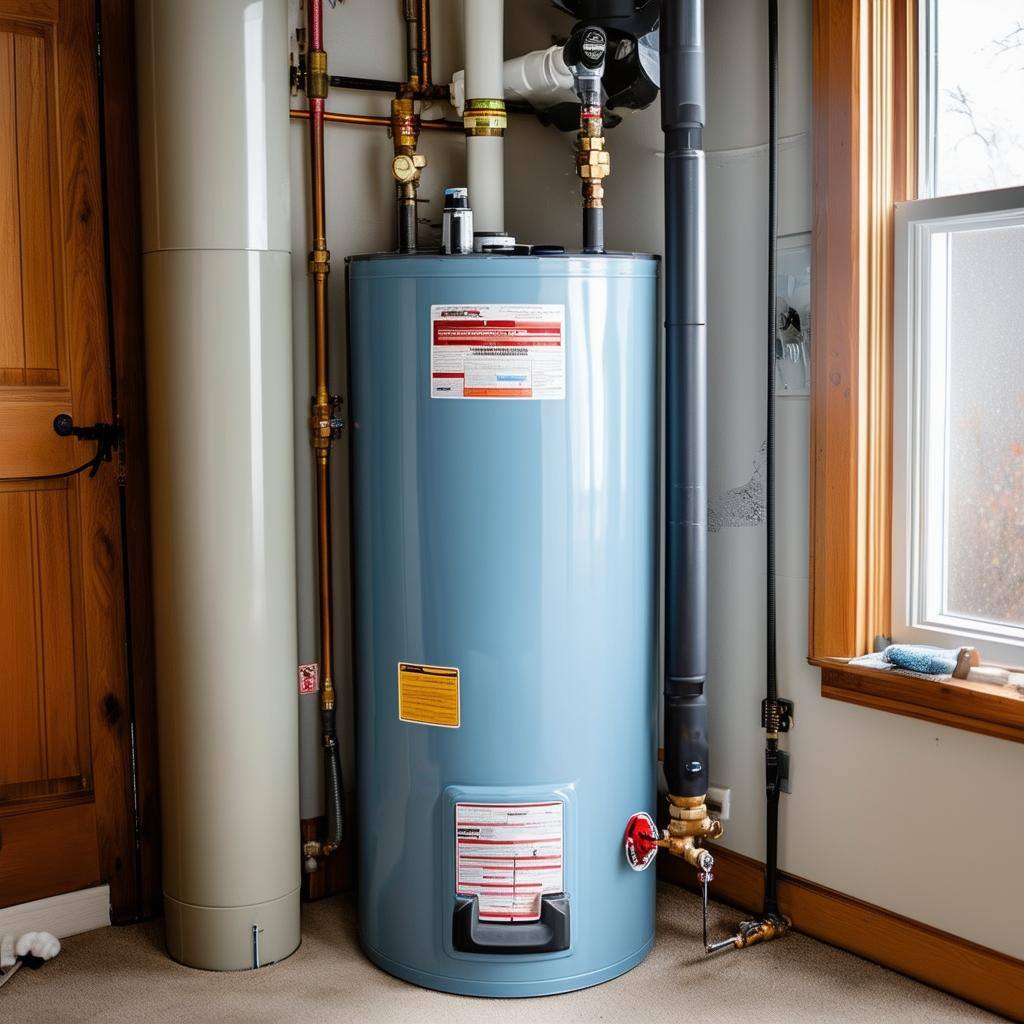
As winter approaches, ensuring your water heater is ready to handle increased demand is essential for comfort and efficiency. The last thing any homeowner wants during a chilly morning is a cold shower due to unexpected hot water heater problems symptoms.
Performing key maintenance tasks on your water heater can improve water heater efficiency, prolong its life, and prevent inconvenient breakdowns during the colder months. Here are essential maintenance tips to help you prepare your water heater for winter and avoid hot water heater repair.
1. Check for Common Water Heater Problems
Before winter sets in, inspect your water heater for any hot water heater problems symptoms that may indicate it needs maintenance or repairs. Early signs of trouble include fluctuating water temperatures, unusual noises, discolored water, and slow recovery times after hot water is used. These symptoms can signal issues like sediment buildup, a faulty thermostat, or a failing heating element.
- Quick Fixes: For minor issues, draining the tank or resetting the thermostat might help. However, if problems persist, consult a professional to assess your system and avoid further complications.
Detecting these symptoms early on can save you from unexpected breakdowns, especially during peak winter usage.
2. Flush the Tank to Improve Water Heater Efficiency
Sediment buildup at the bottom of the tank is a common issue that affects both traditional and high efficiency water heater models. Over time, minerals and debris settle in the tank, creating a layer that reduces efficiency by forcing the heating element to work harder to heat water. Flushing your water heater can help eliminate sediment, leading to improved efficiency and lower energy bills.
- Flushing Steps: To flush the tank, turn off the water heater, connect a hose to the drain valve, and let the water run until it’s clear. This process removes sediment and keeps your water heater running smoothly.
Regularly flushing the tank not only helps maintain water heater efficiency but also extends the lifespan of your unit by reducing the strain on internal components.
3. Insulate the Tank and Pipes
Insulating your water heater tank and surrounding pipes is a simple yet effective way to increase energy efficient water heater performance, especially during winter. Insulation helps to retain heat, allowing the water heater to use less energy to maintain the desired temperature.
- Insulating the Tank: Use an insulating blanket specifically designed for water heaters. Wrap the blanket around the tank, avoiding any areas that could obstruct the thermostat or burner.
- Insulating Pipes: Insulate the pipes leading from your water heater to prevent heat loss, especially if they are located in colder areas of the home. Pipe insulation sleeves are inexpensive and easy to install.
By insulating your system, you can reduce the workload on your water heater and cut down on energy costs, making it an essential part of winter preparation for both standard and high efficiency gas water heater models.
4. Consider Upgrading to a High-Efficiency or Tankless Water Heater
If your water heater is nearing the end of its lifespan or requires frequent repairs, it may be worth considering an upgrade to a high efficiency water heater or tankless model before winter. High-efficiency water heaters are designed to use less energy, saving you money on utility bills while providing consistent hot water.
- Tankless Water Heater Benefits: Tankless models heat water on demand, meaning they don’t need to keep a large tank of water hot. This results in increased energy savings and a continuous supply of hot water, making them ideal for homes with high hot water demand.
- Installation Considerations: While the tankless water heater installation cost and labor cost to install water heater can be higher initially, the long-term savings on energy bills and the convenience of unlimited hot water make them a worthwhile investment.
If you’re considering an upgrade, contact a professional to discuss options for installing a water heater that best meets your home’s needs and budget.
5. Test the Temperature and Pressure (T&P) Relief Valve
The temperature and pressure (T&P) relief valve is an essential safety feature on your water heater, as it releases excess pressure from the tank if the water becomes too hot. Testing this valve as part of your winter maintenance ensures that it’s functioning correctly and can help prevent dangerous malfunctions.
- Testing the T&P Valve: Place a bucket under the discharge pipe and gently lift the lever on the T&P valve. You should hear a slight rush of water, indicating the valve is working properly. If the valve fails to release water or continues to leak after testing, it’s time to replace it.
Testing the T&P valve is essential for all water heaters, especially high-efficiency and tankless models that operate under different pressures. A functioning T&P valve ensures the safety and efficiency of your system throughout the winter months.
Schedule a Professional Water Heater Inspection
While many water heater maintenance tasks can be done as DIY projects, scheduling a professional inspection is highly recommended for a comprehensive evaluation of your system. Professional plumbers can check for any hidden issues, conduct a thorough cleaning, and offer expert advice on maximizing water heater efficiency.
If your water heater requires replacement, a professional can help you understand the labor cost to install water heater models, including high-efficiency and tankless systems. Many companies offer water heater installation as well as winter maintenance services, making it easy to prepare your system for the colder months ahead.


